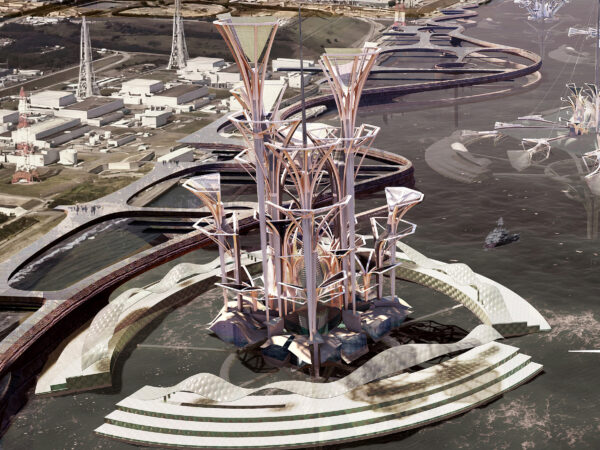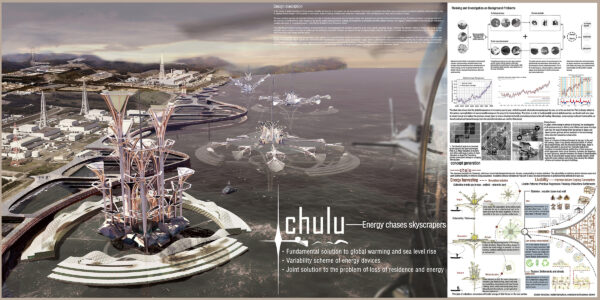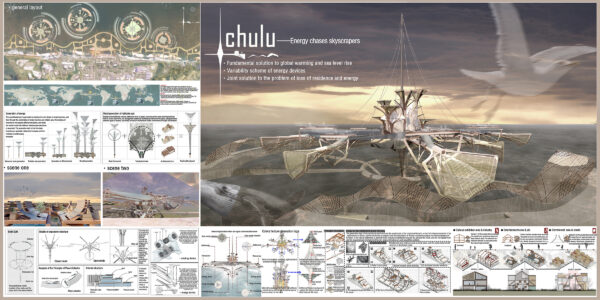Editors’ Choice
2023 Skyscraper Competition
Kai Tang, Qingxiang Li, Songjiang Han, Yonglei Li, Xinyi Li
China
In the context of global warming and the increasing variability and diversity of skyscrapers, we ask two questions: Can people’s sustainable vision of the natural environment be achieved simply by using traditional models to regulate climate change? Is the variability of skyscrapers limited to external conditions and exhibit non-sustainability? With that skepticism in mind, we put forward our ideas.
The topic of global warming has been described and recorded in historian’s documents since the ancient Greece. And gradually came into view at the end of the last century. The known solutions to global warming and sea-level rise are limited to two: direct changes to the way the climate works and island-building. Our perspective is completely out of the ordinary interface. We propose a “Radical solution to greenhouse gas emissions, a complete alternative to conventional energy — the Change-Tracking Energy Skyscraper Vision”.
First, from the perspective of energy extraction, we are looking for the most sustainable and abundant energy type in the world, namely ocean tidal energy. In general, the extraction method of Marine tidal energy is fixed and rigid, which is subject to the external weather and the periodicity of sea water. However, we propose the way of chasing the tide, using the skyscraper as a mobile energy park to chase the surge of the tide in the sea and continuously draw energy from the nature.
Based on the acquisition method and the uncertainty of the building, we proposed the basic building mode of the combination of mother and child method and the closed connection of the inbound station, and the open floating of the outbound station. Specific base stations have been installed at the Fukushima nuclear power plant in Japan, which is suffering from rising sea levels and energy crisis due to climate change. In combination with the traditional Asian culture, this paper proposes the image of the opening and closing of the buildings of ‘Kunpeng’. Based on the traditional experiment of Japanese residential settlements, this paper proposes the thinking of the variable residential buildings under the variable skyscraper. Finally, all kinds of models are simplified and integrated to form this conceptual scheme.

















